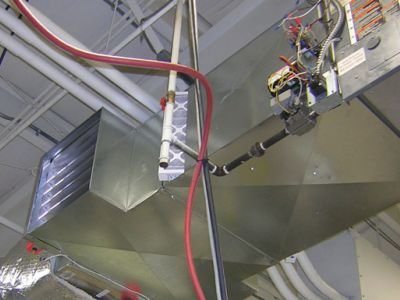Using Michigan’s Climate to Improve Manufacturing Precision

Protomatic’s goal is to maintain the highest level of quality in the parts manufactured, assuring that the criteria for “Life-Saving Precision” are always met.
One of the considerations for meeting this criterion is the temperature of the production environment. Precision machining requires exacting attention to detail, and a part will have to be scrapped if it is out of dimension by a few microns due to temperature discrepancies. To maintain the tight tolerances for the parts we produce, a consistent temperature needs to be maintained in the shop at all times.
Temperature is an important consideration during all phases of the production and inspection process. When manufacturing a part that will be dimensionally temperature sensitive, Protomatic uses a machine with linear glass scales. Being less temperature sensitive than conventional rotary scales, the glass scales enable the machines to position themselves more accurately. However, if the ambient shop temperature is allowed to vary over the work day, fixturing and other temperature-sensitive activities that impact position will gradually cause positional drift.
Since the CNC machines put off a lot of heat, the air conditioners need to run even during the cold days of winter. Being surrounded by “free” cold air during the winter months, the running air conditioners represented a waste of energy and money. Protomatic decided to install an active monitoring system that pulls in the cold outside air to reduce the load on manufacturing air conditioners. It’s not glamorous equipment, but it becomes more so when analyzing the cost of a scrapped part.
Protomatic has converted two of the four main air conditioning units in the manufacturing area to accommodate this change. Proportionally large intake ducts provide the cool outside air, significantly improving building temperature control and reducing electricity usage. A more efficiently climate-controlled shop ensures that Protomatic’s mission of “Life-saving Precision” can be accomplished.


